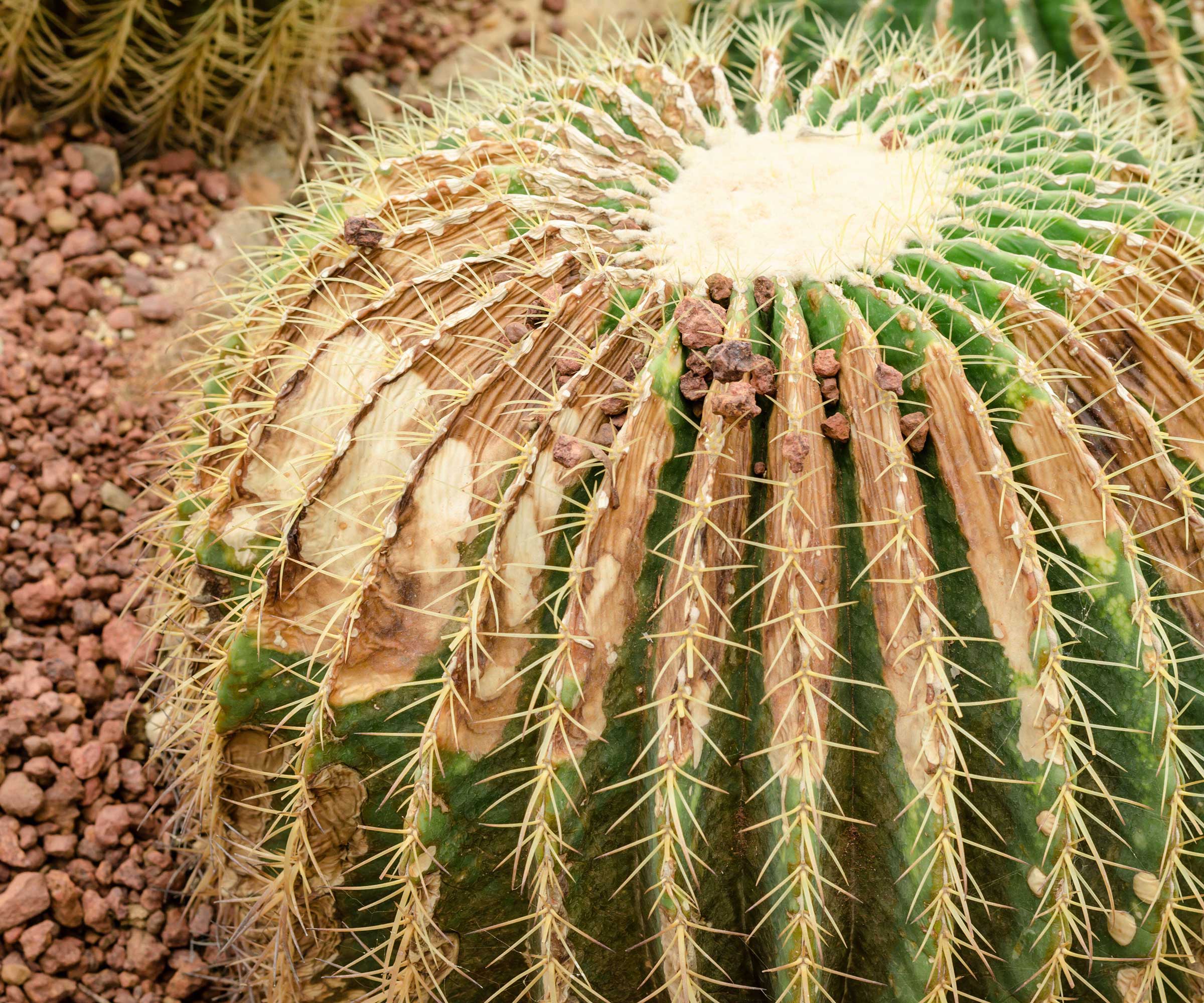Many plant enthusiasts and urban gardeners have embraced cacti for their hardy nature and unique aesthetics. However, the beauty of these succulent wonders can often be marred when their vibrant green surfaces begin to turn brown. When this discoloration occurs, it can be a cause for concern. Understanding the reasons behind a cactus turning brown is crucial for maintaining a healthy plant.
There are several potential causes for this browning, each requiring specific attention and care. The following sections will delve into these causes, offering insight into preventative measures and solutions.
Environmental Stressors and Poor Habits
- One of the primary causes of browning in cacti is environmental stress. Cacti are desert-dwelling plants, and while they are adept at adapting to harsh conditions, they still require specific environments to thrive. Factors such as inconsistent watering, extreme temperature changes, and exposure to direct sunlight can all lead to browning.
- Overwatering is a common mistake made by many plant caretakers. Cacti are specially designed to store water, making them susceptible to root rot when excess moisture lingers in the soil. Signs of overwatering may initially appear as brown spots or mushy areas, as the plant’s roots struggle to absorb nutrients and oxygen.
- Conversely, underwatering can also produce brown patches. When cacti do not receive enough moisture, they can shrivel and develop a dry, brown appearance. Proper watering practices dictate a thorough soaking followed by a complete drying out period before the next watering.
- Temperature fluctuations pose another risk. Cacti flourish in warm, stable climates and can suffer when exposed to cold drafts or sudden drops in temperature, often resulting in browning. It is vital to maintain a consistent temperature range that mimics their native habitat.
- Lastly, light exposure is crucial. While many cacti enjoy the warmth of direct sunlight, too much can lead to sunburn. This is often characterized by yellowing or browning at the tips and sides of the plant. Proper placement in a location that offers ample light without the risk of scorching is essential for their overall health.
Soil Quality and Nutrient Deficiency
- The type of soil in which a cactus is planted can significantly impact its health. Well-draining soil is imperative, as cacti require a medium that allows excess water to escape easily to prevent root rot. Poor soil quality that retains too much moisture can lead to browning and other health issues.
- Adequate nutrients also play a pivotal role in the health of a cactus. Nutrient deficiency, particularly nitrogen, is another culprit that might contribute to browning. A cactus lacking essential nutrients may display yellowing or browning lower leaves, as the plant reallocates its limited resources to sustain vital areas. Regular fertilization using a balanced fertilizer during the growing season will help ensure that these plants receive the necessary nutrients for optimal growth.
- Interestingly, over-fertilizing can also lead to adverse effects. An abundance of fertilizers, particularly those high in salts, can result in soil toxicity. This toxicity can cause browning as the plant’s physiological processes become disturbed. A formula tailored for cacti is essential, as it provides the right balance of nutrients without causing harm.
Pest Infestations and Disease
In addition to environmental factors and soil quality, pest infestations can be a significant cause of browning in cacti. Common pests such as mealybugs, spider mites, and scale insects can wreak havoc on a cactus’s health. They often feed on the plant’s sap, leading to stress and browning over time. Regular inspections and prompt interventions using insecticidal soap or neem oil can help mitigate these pests’ effects.
Furthermore, diseases like fungal infections often arise when a cactus is under duress. These infections might manifest as brown or black spots, often accompanied by a mushy texture. Keeping the cactus in well-aerated spaces, not overcrowding plants, and allowing sufficient air circulation can significantly reduce the risk of disease development.
Taking Action: Solutions and Prevention
Addressing the browning of a cactus requires a reactive yet proactive approach. Assessing the plant’s environment is the first step—ensuring it has access to optimal lighting, proper watering practices, and suitable temperatures. A thorough inspection of the potting soil is also essential; switching to a well-draining cactus mix can promote healthier roots.
For those noticing signs of pest infestation or disease, immediate action is necessary. Isolating the affected plant can prevent the spread and applying suitable treatments can help restore its vitality. Maintaining proper watering schedules and ensuring the cactus is not subjected to temperature extremes will also aid in reducing further occurrences of browning.
In conclusion, understanding the reasons why a cactus may turn brown is foundational for any cactus caretaker. With the right knowledge and practices, these resilient plants can continue to bring joy and beauty into homes. Regular attention to their environmental needs, careful monitoring of soil health, and vigilance against pests and diseases will foster a thriving cactus garden.





Leave a Comment